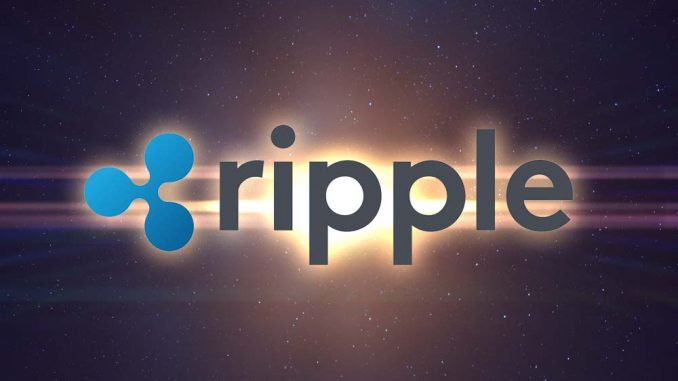
Live XRP Price: Real-Time Ripple Coin USD Exchange Rate Value
Ripple is one of the biggest companies in the crypto ecosystem, their XRP coin is the token you love to hate.
Ripple, ran by Ripple Labs (originally Opencoin), is a platform and a currency. It is made up of a blockchainless payment protocol designed as a day to day low commission exchange network using the company’s patented-technology, the Ripple protocol consensus algorithm (RPCA). The Ripple payment protocol hopes to be adopted and integrated into the existing banks of today to faciliate fast international transactions worldwide by providing a frictionlesss cross-border remittance service to help send money globally.
From founders Chris Larsen and Jed McCaleb to current CEO Brad Garlinghouse, this review of the Ripple company and XRP cryptocurrency is going to be a deep dive on how the coveted XRP coin (currently ranked #3 in total market cap) is used to represent and transfer value on the Ripple Network.
As the Ripple (XRP) user base continues to grow with bullish price predictions , let’s review ‘the other crypto’.
What is Ripple and How XRP Works

In its most basic sense, Ripple can be thought of like a real-time gross settlement system which, along with its associated cryptocurrency ‘XRP’, has been designed to make monetary transactions more streamlined and hassle free for its users. The project was launched back in 2012 as a means of providing the global finance community with an all-in-one payment processing and remittance ecosystem that could be used by several different entities such as:
300 financial/banking institutions (in 40 countries and 6 continents)
Startups
Business owners
Consumers
As per the project’s whitepaper, Ripple seeks to replace the global payment infrastructure that is currently being utilized across the globe with a system that is not only ‘decentralized’ but also open source-based and easily accessible to people irrespective of their financial background. In addition to this, using its native token creation system the platform allows its users to devise their very own crypto and fiat currencies. As a result of these features, Ripple has been adopted by several different banking outfits as well as financial organizations because of its RippleNet growth towards being instant, reliable and cheap costs.
As the Ripple and XRP era continue, the RippleNet advantages of having speed, certainty, liquidity management and transparency are putting both the company and crypto coin in a unique position given the thousands of cryptoassets in the market today.
Contents
1 Live XRP Price: Real-Time Ripple Coin USD Exchange Rate Value2 What is Ripple and How XRP Works3 Reviewing Ripple’s Origins: The Who, What and When4 Key Points Worth Bearing in Mind5 Ripple and Mining6 What Distinguishes XRP from Other Premier Cryptocurrencies?7 What is the Ripple Transaction Protocol and who controls it?8 XRP: An in-depth Ripple Cryptocurrency Coin Look9 What Advantages Does Ripple Offer?10 The XRP Coin Downsides11 How Does Ripple Work?12 Current Ripple Company Partnerships12.1 (i) North America and Canada:12.2 (ii) The United Kingdom, Spain, France, Germany and other smaller European Nations:12.3 (iii) Middle East — Israel, Kuwait, Lebanon, Saudi Arabia,12.4 (iv) Asia — Singapore, Thailand, Vietnam, India, Indonesia, Japan and S.Korea12.5 (v) Australia and New Zealand13 Ripple: A Brief Timeline of the XRP Coin14 Ripple (Company), XRP (Coin) and Their Relationship15 The Most Common Mistakes About XRP and Ripple16 What the World Looks Like For Ripple in 2020: XRP Expectations?17 Is Ripple Still a Powerful Force?18 The State of Ripple – Its Price Forecast Over 2020 in Technical Terms19 So, What Do Experts Say About the Matter?20 What is Going to Drive Ripple’s Growth in 2020?21 Forging the RippleNet – PNG Bank Jumps Into Blockchain and Ripple22 Is There an Estimation on How Much XRP Will be Worth by the end of 2019?23 Can and Will Ripple be Able to Reach $10 in 2020?24 The Bottom Line is This
Reviewing Ripple’s Origins: The Who, What and When
()Rank:
Before we can get into the impressive Ripple resume of partnerships like American Express, MoneyGram, Santander, PNC, SBI Remit and BeeTech or acknolwedge that XRP trades on over 100 markets and exchanges, let’s go back to the beginning and unearth some of the organic origins of the company and token.
As some of our regular readers may be aware of, work on the Ripple project began back in 2004 when developers Jed McCaleb, Arthur Britto, and David Schwartz became inspired by a decentralized payment system called RipplePay.com that was devised by a Canadian web dev named Ryan Fugger. However, McCaleb’s idea was to make use of blockchain technology in order to make the aforementioned system more transparent as well as eliminate many of the inefficiencies associated with the Bitcoin ecosystem (such as excessive power consumption, poor tx speeds and centralization) – (which would later turn into Stellar Lumens (XLM)).
In this regard, it also bears mentioning that quite unlike Bitcoin, all XRP based transactions are verified through the use of a community-wide consensus vote instead of users having to rely on miners to greenlight their transactions.
In 2012, Ripple’s core dev team welcomed Chris Larsen who then requested Fugger to provide his team with the required permission to continue work on RipplePay.com and transform the platform into a full-fledged cryptocurrency and monetary system. These developments helped spur the creation of OpenCoin — an organization that would later be re-christened as Ripple Labs.
Around this time, Larsen and co also started to devote a lot of time towards the creation of what we now know as the Ripple Transaction Protocol (RTO), a system that allows users to facilitate instant transfers irrespective of their physical locations. To be a bit more specific, the protocol is compatible with a number of digital currencies as well as other asset mediums. The team programmed the RTPs core framework in such a way that it only relied on a central ledger that would be administered by several different servers continuously for transaction verification purposes.
Additionally, to help in the faster processing of individual transactions, the team behind Ripple devised a cryptocurrency called the XRP that was designed to help users move their funds around in a highly streamlined manner. If that wasn’t enough, Ripple also linked Bitcoin to its native state, thereby allowing crypto enthusiasts to use the platform to send payments directly into any BTC wallet of their choice.
All of this would essentially form into today’s RippleNet, which is Ripple’s global payments network. Here is how it works:
During the first half of 2013, Ripple Labs announced the release of its platform’s reference server and client as open source software, thereby allowing independent developers to contribute towards Ripple’s ensured future progress. Not only that, by the beginning of 2014, Ripple’s core dev team had already started to shift its focus on the banking sector, to try and replace the existing, outmoded systems that many banks are still making use of till this very day to facilitate their day-to-day transactions. In this regard, just a few months later, Munich-based Fidor Bank became the first mainstream financial entity to adopt the Ripple Transaction Protocol (RTP). This news was soon followed by the word that New Jersey-based Cross River Bank and Kansas-based CBW Bank had also followed suit.
By the end of 2014, Ripple, who wants to become the world’s most relitable global payments network, had announced several notable partnerships with big-name players such as Western Union, the Commonwealth Bank of Australia, the Royal Bank of Canada and Earthport, a global payment service that is affiliated with companies like the Bank of America and HSBC. However, the following year, Ripple Labs was fined a total of $700,000 by the Financial Crimes Enforcement Network (FinCEN) because of certain violations related to the Bank Secrecy Act. As a result of the penalty, the folks over at Ripple swiftly proceeded to add several AML monitoring modules to their protocol to make it fully compliant with existing U.S. finance laws.
Over the last 2-3 years, Ripple Labs has grown quite exponentially, with the organization’s offices now present in a number of different countries such as Australia, the United Kingdom, and Luxembourg.
Here is a curated image of all of the Ripple Labs investors from 2013 to 2016:
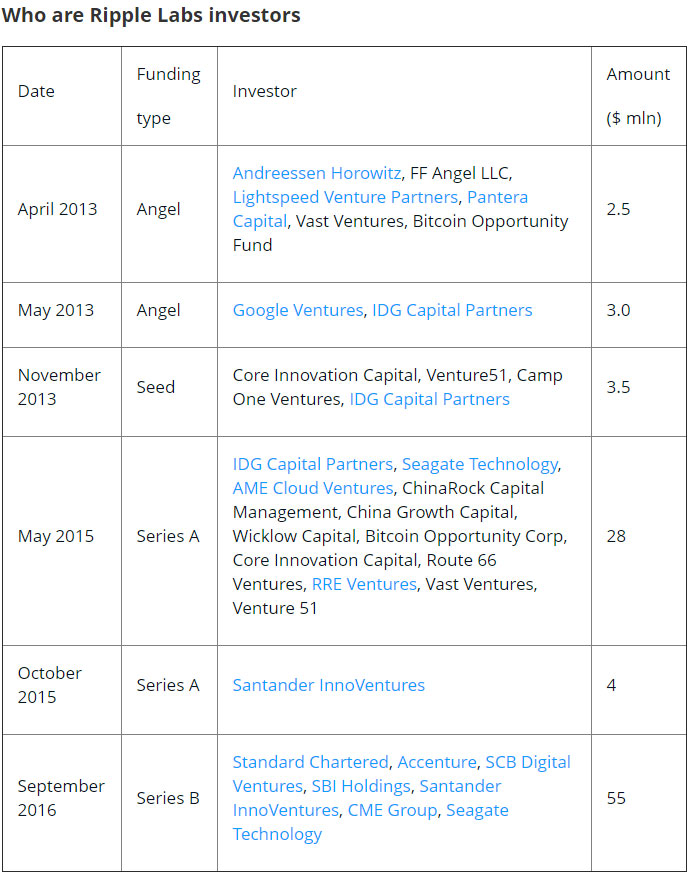
Key Points Worth Bearing in Mind

When talking about the Ripple ecosystem, native transactions only occur when users facilitate cryptographically signed transactions via XRP or a unique fiat currency of their choice. In this regard, it should be pointed out that all XRP digital asset transactions are monitored using Ripple’s internal ledger system, the XRP Ledger.
XRP is an open-source, decentralized digital asset built for payments ~ official Ripple.com website
Ever since Ripple’s cross-border tx framework was employed by several banks around the world, more and more people have begun to view crypto-enabled technologies with a more open mind.
Owing to Ripple’s ever-increasing adoption across a wide array of mainstream financial domains, a large number of investors and traders are now beginning to trust the platform. And while we are on the noteworthy topics of interest in the Ripple ecosystem, let’s stick this statement in there as it is one of the bigger macro-talking points about the Ripple vs XRP debate which we will review below.
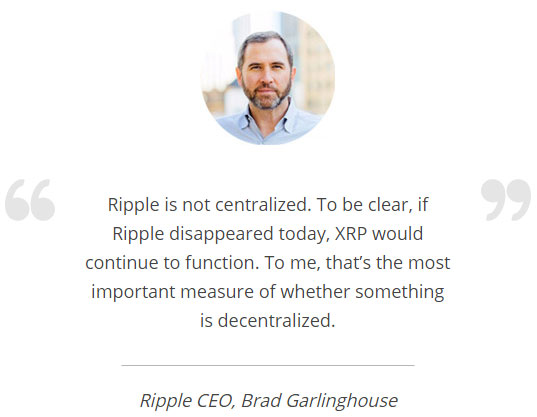
Ripple and Mining
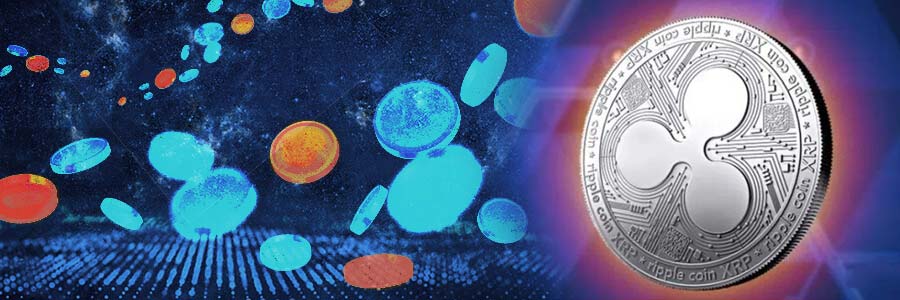
Unlike other popular cryptocurrencies like Bitcoin, Ethereum and Monero, XRP cannot be mined. This is because while BTC and other similar digital assets make use of miners to process their native transactions, transfers associated with Ripple are facilitated through the use of a system-wide user consensus framework (which essentially renders the concept of mining useless).
Additionally, it should also be pointed out that upon its inception, Ripple’s core design team only created a total of 100,000,000,000 XRP — a figure that has not wavered since, despite continued community complaints regarding the same. Also, it bears mentioning that upon XRPs release, a number of people criticized how the currency was being distributed, with the founders retaining 20 percent of all XRP tokens.
Lastly, because of its “zero mining potential,” a number of crypto enthusiasts have called out the digital currency for being too centralized. Not only that, but the aforementioned fact has also limited the overall use and growth of the project in some ways.
What Distinguishes XRP from Other Premier Cryptocurrencies?

Unlike Bitcoin, Ripple comes backed by a full-fledged monetary ecosystem that can be utilized for a wide array of purposes. Similarly, when compared with Ethereum (a platform that is designed primarily for computing purposes) Ripple deals exclusively with financial functions such as remittances, cross-border txs etc. This is the very reason why Ethereum, EOS, Bitcoin have not been adopted by banking institutions — since they lack the basic infrastructure needed to process voluminous monetary transfers.
What is the Ripple Transaction Protocol and who controls it?

The Ripple Transaction Protocol (RTP) is a digital framework through which all of Ripple’s monetary processes take place. This is in stark contrast to other cryptocurrencies that make use of a blockchain consensus algorithm to facilitate/process their transactions.
While we are on the subject, it would also be useful for our readers to understand that all transactions taking place within the Ripple ecosystem require a certain level of pre-existing trust in order to proceed. What this means is that if two users have not established a trust relationship already, the tx in question will stay in limbo until a linear path involving all of the associated parties is established. The aforementioned concept has been borrowed from Islamic banking principles wherein all exchange of money is done through the use of mutual trust relationships instead of charging the other person an interest rate.
Now, talking about who controls Ripple, a quick look at the project’s core infrastructure we can see that the project is far more centralized when compared to a host of other cryptocurrencies. This is because Ripple Labs still maintains a leading role when it comes to the development of XRP. Not only that, the organization also owns a major share of all XRP that is currently in circulation today.
XRP: An in-depth Ripple Cryptocurrency Coin Look

In its most basic sense, XRP can be viewed as the cryptocurrency that powers the Ripple ecosystem. In this regard, a perfect analogous comparison would be that of Ether and Ethereum platform.
In terms of XRP’s value, the currency’s price is determined simply by how many people (at any given point in time) find the asset useful. Also, due to Ripple’s amazing utility as a financial services platform, a number of established banks have started to adopt the technology to enhance their overall tx efficiency. This has helped spur the price of XRP and has given it the market strength that very few other digital currencies currently enjoy.
As mentioned previously, back when Ripple was first launched, the project’s core dev team created a total of 100,000,000,000 XRP that were meant to be used for all transaction related purposes. Also, unlike other cryptocurrencies, XRP is unmineable, but its total circulation supply can be increased — however, there are no plans to do such a thing anytime soon.
From an acquisition standpoint, we can see that quite like most of the other cryptocurrencies in the market today, XRP too can be purchased from a number of different exchanges and trading platforms with the touch of a button. Similarly, storing XRP is also quite straightforward and can be done using a number of different wallet solutions.
What Advantages Does Ripple Offer?
Mainstream Adoption: Ripple is currently backed by a whole host of mainstream financial institutions and payment providers including HSBC, Western Union, CBA and the Royal Bank of Canada. This puts Ripple in a unique position of mainstream acceptance that a few other digital currencies currently enjoy.
Regulatory Green Light and Versatility: From the very beginning, Ripple has laid great importance on establishing its core framework in line with the regulatory requirements of various finance agencies across the globe. To better understand the scenario, we can see that Ripple can be used to generate custom tokens while the XRP can be traded against a host of digital commodities such as frequent flyer miles, cell phone minutes etc.
Low Tx Costs: When compared to many of its associated crypto offerings, Ripple possesses a host of niche’ advantages (such as low transaction fees, payment freedom, and global availability) that make it unique. Not only that, but XRP is also one of the fastest digital assets on the market today (which is also the reason why the currency has been adopted by so many banking institutions.)
The XRP Coin Downsides
Finite Supply: One of Ripple’s biggest issues is its finite supply — which is currently capped at the 100,000,000,000 mark. And despite the project’s core backing community repeatedly calling for the currency’s supply to be increased, Ripple’s dev team has time and again refused to create more XRP — something that has lead to the creation of certain deflationary/supply related problems with the project.
Centralization: As mentioned before, a whopping 20% of XRP’s total supply belongs to Ripple’s founders. On top of that, Ripple cannot be mined, an aspect that is considered to be one of the biggest drawbacks of the premier asset.
Past Troubles: In the past, Ripple Labs has faced legal action from regulatory authorities such as the FINCEN. For example, it should be pointed out that in 2015, the government agency fined Ripple Labs a whopping sum of $700,000 for violating the Bank Secrecy Act. Similarly, Ripple was also sued last year for alleged fraud concerning an ICO scheme.
Lack of Transparency: A major issue with Ripple is that XRP transactions can be frozen by the system. An example of this is when a couple of years back, co-founder Jed McCaleb tried to liquidate $1 million worth of his XRP holdings — an action that was halted by a third party entity. This episode not only left a bad impression on the global crypto community (regarding XRPs overall utility) but also resulted in many people arguing that the idea of a transaction being halted by a third party entity runs counter to the very foundation of what blockchain tech and crypto stand for.
How Does Ripple Work?

As Ripple’s widespread popularity has continued to surge, more and more institutions are beginning to employ XRP as a mediator in their fiat currency exchanges. This is because a whole host of different financial assets cannot be swapped in exchange for each other directly. Instead, they need to be traded through the use of the US dollar — which serves as an intermediary swap facilitator. In this regard, Ripple fulfills the same function, but at a processing cost, that is substantially lower than a USD-based tx.
Additionally, as mentioned in an earlier section, Ripple is now also being used by many international banks to speed up their cross border transactions. To elaborate on the matter, we can see that Ripple currently boasts of a TPS rate of four seconds per transaction. This figure is not only much higher when compared to other similar digital currencies, but it is also much faster when compared with the tx capacity of various traditional banking systems.
Lastly, Ripple’s ecosystem has been designed in a way that allows users to devise their very own custom tokens that are backed by XRP.
Safety: Is using XRP really Secure?

Straight out the door, it needs to be made clear that any monetary system that relies on a computer or other digital platform can never be 100 percent safe. However, in regards to Ripple, we can see that the technology makes use of a number of protocols that make it extremely secure — so much so that many banks have decided to forego the use of their natve tx systems in favor of Ripple’s blockchain tx platform.
Also, from the very beginning, it has been quite obvious to the global crypto community that Ripple is designed primarily to work within the confines of today’s existing financial laws — which basically means that the platform conforms to the same regulations that conventional banks and payment providers have to adhere to.
Lastly, over the past 4-5 years, a number of digital currency enthusiasts have slighted Ripple for being too centralized. This has given birth to many fears that the project might, in fact, be just another elaborate ponzi scheme or scam. However, since Ripple has adhered to various mainsteram financial regulations from day one, this narrative has failed to gather any sort of real momentum.
Ripple vs Bitcoin
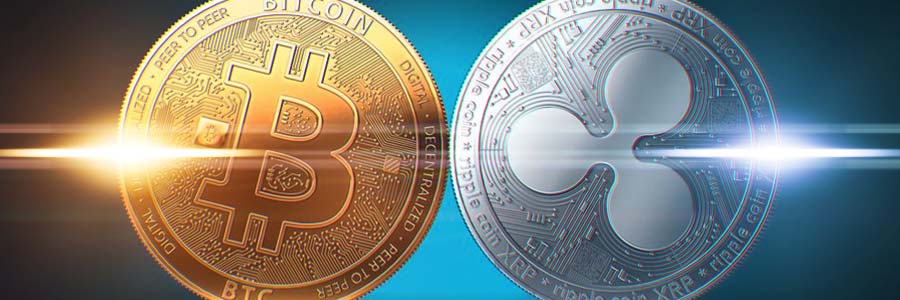
A question that many budding crypto investors and tech enthusiasts seem to often as is, “If Ripple is so much more advanced than BTC, how come its use is still quite limited when compared to the flagship cryptocoin?”. The simple answer is that Bitcoin and XRP serve two completely different functions. For example, BTC is meant to serve as an SOV that can also be used for financial transactions. However, Ripple is more of a consolidated financial services platform that makes tx’s faster, streamlined and secure for its users. With that being said, Bitcoin’s simplicity is what makes it more appealing to many investors over other premier digital assets such as ETH, EOS, ADA and XRP.
From an adoption standpoint, Ripple faces quite a battle because many vendors still prefer to make use of BTC due to its market reputation and overall ease of use.
As things stand, the number of merchants making use of BTC far outweighs those using XRP.
How is XRP as an Investment Vehicle?

While many people continue to stock up on BTC and ETH because they think these assets will continue to multiply in value as we move into the future, the question of whether XRP can be used for similar purposes is also gaining a lot of momentum in recent years.
While XRP does not guarantee any profits, the fact that its parent platform (Ripple) is becoming increasingly popular amongst a whole host of mainstream financial institutions, puts the currency in a unique position of profitability than other crypto coins don’t currently enjoy.
Plus, thanks to the overall versatility of the Ripple network, more and more companies are finding new ways in which to make use of the technology. This has propelled XRP into the realm of the world’s most traded cryptocurrencies.
Current Ripple Company Partnerships
In this section, we will look at a detailed list of all the financial institutions that are currently a part of RippleNET — a diverse ecosystem comprising of central/private banks, remittance firms, brokerages and payments providers that make use of one or more of Ripple’s remittance systems (i.e. xRapid, xCurrent, and xVia). These platforms have been tested quite thoroughly and many independent researchers have found that they are demonstrably better than the SWIFT protocol in terms of:
Transaction times
Processing fees
Uncertainty in transaction execution
For those of our readers who may not be aware of what SWIFT is, it can be thought of as a messaging network that is currently being used by a wide array of banks/financial institutions to send and receive information (as well as money) from each other.
Also, it bears mentioning that all of the entities that are currently a part of RippleNET can make use of the network to facilitate their intl. transactions in a highly streamlined manner.
In regards to some of the banks that are currently making use of Ripple’s various cross-border services include established players such as Standard Chartered, RBC, SBI, Axis and RakBank of UAE is up and running. Additionally, a number of corporate giants (such as Accenture, Deloitte, Santander, UBS, UniCredit) too are utilizing Ripple’s framework to make their internal transactions smoother and more hassle-free.
Provided below is a detailed list of all the banks that have signed a partnership/agreement with Ripple:
(i) North America and Canada:
American Express
Standard Chartered
Bank of America Merrill Lynch
PNC Financial Services
Cuallix
Catalyst Corporate Federal Credit Union
Star One Credit Union
CBW Bank
Cross River Bank
Royal Bank of Canada
DH Corporation
Canadian Imperial Bank of Commerce
Scotiabank
Bank of Montreal
ATB Financial
TD Bank Canada
Saldo
(ii) The United Kingdom, Spain, France, Germany and other smaller European Nations:
Interbank
Euro Exim Bank
Bank of England (Central bank)
HSBC
Barclays
Vitesse
Royal Bank of Scotland
Credit Agricole
Natixis
Banco Santander
BBVA
Banca Intesa Sanpaolo
UniCredit
Reise Bank
Fidor Bank
Rabobank
Erste Group AG
UBS
Credit Suisse
Nordea
Skandinaviska Enskilda Banken AB
Akbank
(iii) Middle East — Israel, Kuwait, Lebanon, Saudi Arabia,
Bank Leumi Le-Israel
National Bank of Kuwait
Kuwait Finance House
Bank Dhofar
Saudi Arabian Monetary Authority (Central bank)
First Bank of Abu Dhabi
RakBank
Al Rajhi Bank
(iv) Asia — Singapore, Thailand, Vietnam, India, Indonesia, Japan and S.Korea
DBS Group
OCBC Bank
United Overseas Bank
Singapore Exchange
Krungsri
Bank of Thailand (Central bank)
Bank of Indonesia (Central bank)
Siam Commercial Bank
Cargills Bank
Kotak Mahindra Bank
IndusInd Bank
Axis Bank
Yes Bank
Faysal Bank
Shanghai Huarui Bank
Woori Bank
SBI Holdings
Mitsubishi UFJ Financial Group
Fukui Bank
Star Bank
Aomori Bank
Ashikaga Bank
Awa Bank
AEON Bank
Senshu Ikeda Bank
Iyo Bank
Oita Bank
Orix Bank
Gumma Bank
Keiyo Bank
San-In Godo Bank
Sikoku Bank
77 Bank
Shimizu Bank
Juroku Bank
Shinkin Central Bank
Shinsei Bank
Hachijuni Bank
Bank of Yokohama
SBI Sumishin Net Bank
(v) Australia and New Zealand
ANZ
Westpac
Commonwealth Bank of Australia
Macquarie Group
National Australia Bank
Now that we have listed out a majority of the banks that are currently making use of RippleNET, let’s take a look at some of the mainstream payment/remittance providers that too have ported their existing systems onto one of Ripple’s cross-border payment platforms. Some of the key names include:
American Express FX International Payments
InstaRem
SendFriend
Beetech
Viamericas
Transpaygo
UniPAY
MoneyGram
Zip Remit
Itau Unibanco
Western Union
UAE Exchange
TransferGo
SBI Remit
FlashFX
Earthport
Mercury FX
Cambridge Global Payments
Finastra
Davis + Henderson (D+H)
Finablr
LianLian Pay
IDT
GoLance
AirWallex
Dlocal
TAS Group
Ripple: A Brief Timeline of the XRP Coin

$ 48,297.00
$ 4,030.23
$ 568.99
$ 1.00
$ 174.54
$ 1.00
$ 1.27
$ 0.831116
$ 26.62
$ 64.23
2011 — The Origins
While not a lot is known about how Arthur Britto, Jed McCaleb, and David Schwartz came together, it is a well documented fact that the aforementioned individuals came across each other sometime during the spring of 2011. Over the course of the year, this small group continues to work on the development of XRPs basic ledger framework.
2012 (August) — Larsen joins the crew
During August 2012, McCalen, Britto and Schwartz are joined by a famous developer and blockchain enthusiast by the name of Chris Larsen, who had previously worked for a number of successful fintech projects such as E-Loan and Prosper.
2012 (October) — Fugger gives permission
A couple of months after Larsen joins Ripple (not known by that name at the time), the team approaches Ryan Fugger — creator of the original RipplePay website back in 2004 — to continue dev work on his brainchild. Fugger agrees to support the new project and thus spurs the creation of a new firm called OpenCoin.
2013 (February) — Promotions commence
During the latter half of February 2013, OpenCoin starts to advertise itself on Bitcointalk.org (a popular crypto web portal). The promotion campaign goes on for a few months, with the terms of the deal being quite simple — all new sign ups receive 1,000 XRP.
2013 (March – May) — Funding and growth
During the first half of 2013, Ripple continues to make waves across the world. This is because during a period of 2-3 months, the firm is able to raise a substantial sum of money from a number of established angel investors such as:
Pantera Capital
Andreessen Horowitz
Lightspeed Venture Partners
FF Angel LLC
Vast Ventures
Bitcoin Opportunity Fund
IDG Capital Partners
Google
Additionally, it should also be pointed out that during the funding period of Ripple’s early operations, Ripple Labs essentially gave out a certain percentage of ownership of the company to various investors who had shown trust in the project.
2013 (Q3) — OpenCoin changes its name officially
As part of the Money 2020 Expo 2013, representatives for OpenCoin announce that their firm is officially changing its name from OpenCoin to Ripple Labs. The move, in hindsight, proves to be an amazing PR decision, since the term Ripple has now become synonymous with the crypto industry.
2013 (November) — New collaboration announced
During the last week of November, Ripple Labs decides to collaborate with Georgia Tech’s Computing for Good (C4G) initiative.
2014 (January-March) — XRP daily tx volume continues to increase
During the first half of 2014, XRP’s transaction throughput continues to increase, with many exchanges reporting the currency’s daily tx volume to be around the $40 million mark.
2014 (October-November) — Popularity surge continues
Owing to Ripple’s amazing tech capabilities, the platform continues to become increasingly popular all over the globe. Not only that, many developers start to take notice of the project and promote its potential within the global finance sector. In a similar vein, during the latter half of November, Ripple starts to pitch its technology to various banking institutions and remittance providers.
2015 (March) — A controversy erupts
In a sudden turn of events, Ripple Labs restricts Jed McCaleb (one of the co-founders of Ripple) from selling his personal XRP holdings. In all, it is reported that Jed tried to offload a total of 100 million XRP to an unidentified individual for a sizeable sum of $1 million.
To stop the sale from going through, Bitstamp chooses to freeze it’s USD tokens in Jed’s wallet.
2015 (April) — Expansion continues
Owing to Ripple’s ever-increasing popularity, the project continues to expand its operations and set up new offices in locations all over the globe. In April, Ripple Labs opens a new research center in Sydney, Australia to boost its R&D efforts in a big way.
2015 (September) — The rise of XRPChat and downfall of XRPTalk
Within a single month, XRPTalk — an independent platform that provided Ripple enthusiasts with an avenue to come together and debate/discuss XRP-related news (without the negativity that pervaded Bitcointalk.org) — shuts down. The project is the brainchild of an individual referred to as Hurukan. By the end of the month, the forum is no longer online and a new project called XRPChat starts to gain traction amongst the global crypto community. Quite similar to its predecessor, XRPChat also provides its users with a forum to discuss a wide array of matters related to Ripple, XRP and the Interledger Protocol.
2016 (January) — Garlinghouse takes over
During the second week of January, Ripple formally introduces Brad Garlinghouse as its new CEO. Garlinghouse was formerly the CEO and Chairman of Hightail and had also previously held high-ranking positions at a number of other different firms such as AOL (President of Consumer Applications) and Yahoo (Senior Vice President).
2016 (February) — McCaleb lawsuit gets settled
After months of the lawsuit staying in limbo, Jed McCaleb and Ripple Labs finally come to an agreement wherein Jed agrees to a host of resale conditions related to his personal XRP holdings.
2016 (March-July) — Expansion continues
Ripple’s clout continues to increase globally, with the firm opening a string of European offices in premier cities such as London (March) and Luxembourg (June). Following this period, there is also a significant increase in the daily trade volume of XRP.
2016 (September) — New investors continue to flock towards Ripple
By the end of September, Ripple’s technological offerings continue to lure in more and more high profile investors. Some big-names include Standard Charter, Accenture, SCB Digital Ventures, SBI Holdings, Santander Innoventures, CME Group, and Seagate Technologies.
2016 (November) — Tiffany Hayden makes her presence felt
Sometime during mid-November, Tiffany Hayden, the CEO of XRP, is named as one of the most influential leaders within the blockchain industry by a respected media outlet. This helps boost the company’s market profile and further increases consumer interest in Ripple/XRP.
2017 (March-April) — New features added
Between March and April, Ripple’s development team announces the addition of two new features to its existing financial ecosystem — namely, Escrow and Payment Channels. These features help in increasing the general performance and scalability of The Ripple Consensus Ledger (RCL). Not only that, they also allow companies to adopt the RCL as well as the Interledger Protocol (ILP) with much more ease.
Around the same time, Ripple released a blog post announcing its decision to sign partnerships with a total of 10 new banks. Some big names in this regard include:
BBVA in Spain
MUFG in Japan
Akbank in Turkey
SEB in Sweden
Axis Bank and Yes Bank in India
2017 (May-July) — XRP trading pairs included on Kraken
During May, Kraken — one of the top cryptocurrency exchange platforms in the world at the time — announces its decision to add a total of four different XRP trading pairs (RP/EUR, XRP/JPY, XRP/USD, and XRP/CAD) to its native tx interface.
2017 (September) — Lawsuit brought forth against Ripple by R3
A few days into September, R3 LLC, an enterprise blockchain technology company, sues Ripple in relation to a specific legal agreement where the firm had agreed to sell up to 5 billion XRP for a certain price. In return, Ripple countersues R3 stating that the company had reneged on a number of contractual promises, and the lawsuit was a ploy to cash in on XRPs increasing monetary success. In the end, a Delaware judge provides a ruling that sides with Ripple’s version of the story.
2018 – present
During the first week of January 2018, the price of XRP hit its all-time high, with single token trading for a whopping sum of $3. However, in subsequent months, the asset witnesses a gradual decline, with the currency closing out the year at a dismal price point of $0.37. In a similar vein, it bears mentioning that XRP’s performance all through 2019 remains quite disappointing. For example, over the last 9 months, the digital asset has continued to slide — with its value decreasing by a further 15% during the aforementioned period.
Lastly, it bears mentioning that during mid-2018, a class-action lawsuit is filed against Ripple in which the claimant alleges that the firm has propagated the use of a scam that allowed it to “raise hundreds of millions of dollars through unregistered sales of its XRP tokens.” The case is still in court and will hopefully find resolution soon.
Next, let’s move on to our last two main ripple review points in covering the misconceptions between Ripple vs XRP differences, being the company and the coin, and finally the promising predictions and exciting expectations coming from Ripple for XRP.
Ripple (Company), XRP (Coin) and Their Relationship
Ripple and XRP have generally created misunderstandings across the cryptocurrency community. Can we use them interchangeably? Is XRP the same as Ripple? Is XRP a security? These are concepts that yet generate some doubts to crypto investors and users. Nevertheless, in a recent article released by Thomas Silkjaer in Forbes, he provides a clear answer to 14 common misunderstandings about Ripple and XRP.
To expand on above, let’s review the differences between Ripple and XRP and attempt to clear up any misconceptions floating around the XRP army community.
Ripple is a company that aims at improving cross-border transactions with products and services that it has developed. In general, banks and financial institutions have very costly services for sending funds abroad as the global remittance industry for international cross-border payments is north of $1 trillion annually. They are not only expensive for users but they are also inefficient because they take a long time to be settled.
The Most Common Mistakes About XRP and Ripple
Ripple has developed two main cross-border products: xCurrent and also xRapid (which is now On-Demand Liquidity (ODL). Until now, the most adopted product has been xCurrent, since xRapid was launched at the end of 2018. xCurrent is a settlement system that allows participants to send messages, clear and settle transactions.
The services provided by this product are so efficient that they are competing against the current solutions provided by SWIFT, the market leader. SWIFT’s system allows companies and firms to settle payments in a few days.
If settling transactions using xCurrent is fast and less expensive, why to use the digital asset XRP? The solution that the author of the article provides is that everything can be performed faster and in a cheaper way.
Using the xCurrent soluton, if banks have nostro/vostro arrangements, Ripple is able to change the balances on both accounts in a few seconds. Due to the fact that xCurrent is built using the Interledger protocol, it is possible to use FX rates in real time.
About it, Ripple Insights explains:
“The cost and complexity of holding these (nostro/vostro) accounts around the world is one reason why only a handful of banks can process global transactions. The burden of maintaining nostro accounts worldwide is simply unsustainable for most organizations.”
With xRapid it is possible to eliminate the need to use these accounts. xRapid sources liquidity on-demand allowing institutions to purchase XRP for Fiat, make a transaction, and sell the XRP for fiat once again. This can be processed in just a few seconds.
Thus, the first point that Silkjaer makes is that XRP is not needed to process transactions, but it can be used by firms if they want to reduce costs even further.
The second misunderstanding that he talks about is related to XRP volatility and how banks could be affected by it. XRP is clearly volatile. This is how virtual currencies work. They can fluctuate in just a few hours. That means that banks are exposed to these exchange rate fluctuations for a long period of time.
Nevertheless, there is no need for institutions to hold the XRP cryptocurrency. At the same time, the xRapid product works in a very fast way. Institutions purchase the asset, make the transfer, and sell the XRP in a few seconds. A transaction could take just 4 seconds to be confirmed by the network. This is much less than the 10 minutes that are necessary for Bitcoin (BTC) to be settled.
In general, handling fiat currencies for long periods of time is related to volatility. The Euro just dropped almost 1.2% against the US dollar in just a few minutes on March 7. In just a year the Euro dropped 10% compared to the US dollar.
In sum, it is not necessary for parties using XRP to hold the digital currency. They only have to handle them for a few seconds. Instead, using fiat currencies in nostro/vostro accounts, the fluctuation rates for longer periods of time could have a larger effect on the institution.
Stablecoins could also play an important role in helping companies process cross-border transactions. As they are linked to a fiat currency and their value fluctuates very little in comparison to XRP, they might be a good choice in some situations.
However, handling stablecoins is not the same as moving value across borders. Bitcoin, Litecoin (LTC) or XRP there is no promise of value. They are valuable assets per se. Meanwhile, stablecoins are just a promise of value in the future.
Stablecoins can be easily moved and provide stability, but their value ultimately depends on the funds behind them. Thus, the stablecoin is as volatile as the currency it is pegged to and it is issued by a third party that has the necessary fiat to back them all.
Using XRP of other virtual currency that is based in a decentralized blockchain network does not require firms to trust other institutions. The whole network works by itself and if a transaction is processed, it will arrive and the value would have been moved.
Another discussion that Silkjaer brings is related to digital currencies issued by central banks. Could they compete against XRP? Clearly, they are able to do so. The same as with stablecoins. Financial companies and firms would have to place their trust in a centralized authority that is the same institution that created the fiat currency that backs the central bank digital currency (CBDC).
To understand if a CBDC is a better fit for financial companies, it is important to take into account the liquidity of a specific corridor, and whether it is a better fiat than XRP for this specific transaction.
The author of the article debates a very controversial topic. Is XRP a real cryptocurrency? There are individuals that claim that XRP is not a cryptocurrency. But it is important to understand what digital currencies are. Silkjaer provides the reader with three different definitions from the Oxford Dictionary, from Merriam-Webster and from Wikipedia.
He summarises the three definitions in the fact that they need encryption techniques to verify transactions, a decentralized system and no central issuing or regulating authority. As the author of the article believes, these apply to XRP.
He explains that the misconception regarding this issue is related to the fact that XRP does not use Proof-of-Work (PoW) or Proof-of-Stake (PoS) as a consensus algorithm. The XRP uses a consensus mechanism and participants have no rewards for being part of this network.
Is XRP decentralized? This is another controversial topic that the crypto market tends to evaluate and discuss. PoW and PoS rely on the calculation of hashes in order to verify transactions and unlock rewards for miners and stakers.
Ripple is based on Consensus, which is different than PoW and PoS. Consensus eliminates the risk of double spending on the network that PoS and PoW could eventually experience in the case of a 51% attack. Moreover, Ripple has different validators that work around the world and Ripple Labs accounts only for 4 percent of the total number of validators in the network.
Furthermore, the Consensus mechanism makes forks easily possible. There are several participating nodes which trust a different number of validators each. As Silkjaer explains, the first part of the Consensus is agreeing which transactions include in the upcoming ledger. The second part of the Consensus is validation.
Validators validate transactions independently. This results in an identifying hash of the ledger. The hash is then used to compare the results amongst the validators, and after consensus is met, the “winning” version of the ledger will be used.
One of the misconceptions that the community has about XRP is related to the fees that they have to pay to perform a transaction. In this case, using the XRP ledger includes a fee. Larger fees would allow transactions to be processed faster by validators.
However, the fee paid by users is not returned to a central authority, but instead, it is burned, making XRP a deflationary currency. When creating an account on the XRP ledger it is necessary to have a small “reserve.” The fees and reserves were created to avoid spam and malicious attacks. At the moment, the base reserve is 20 XRP.
Another controversial topic is related to who created XRP. The author of the article mentions that in 2004, a developer named Ryan Fugger developed a payment protocol and decentralized platform called Ripplepay.
Later in 2011, Arthur Britto, Jed McCaleb and David Schwartz started working on the XRP ledger in order to eliminate the risks of 51% attack that Bitcoin could eventually experience.
In 2012, Chris Larsen joined the team and Fugger decided to start a new company known as OpenCoin. Until 2013 they gathered $9 million and they created the Ripple Labs company making the source code public.
The founders of the company decided to donate XRP to the company (OpenCoin at that time) and they also kept some funds for themselves.
About Ripple issuing XRP, he commented:
“Whether Ripple issued XRP is at best a blur. The XRP ledger was developed before the company was formed, but the founders of the company were also the people who developed the ledger.”
There are some individuals that believe that Ripple can print more XRP. However, there are no current methods for this to happen. It is not possible to create more XRPs. As the network is “decentalized,” as explained before by Silkjaer, to create more XRP it is necessary for the whole network to approve a major code change.
Ripple controls around 60% of the total XRP supply and it works as part of its revenue model. However, the company cannot access to large amounts of XRP. These funds are locked in escrow and the company can release just 1 billion every single month. The intention is to avoid flooding the market and other further problems. Thus, they sell the XRP coins on OTC or institutional investors.
Ripple sells XRP in order to sustain its business, but once the funds end, they will not have any revenue from the XRP cryptocurrency. Nevertheless, as Ripple’s software is “likely” subscription based (which details about the new RippleNet Home release), onboarding clients will be providing a continues revenue stream.
There are many other things that users believe incorrectly about Ripple. However, XRP has proven to be useful for many companies around the world and individuals that want to process cross-border transactions in an easy way. One of the firms that is implementing Ripple’s technology is BeeTech Global, a company located in Brazil and that allows customers to process payments around the world in a fast and cheap way.
What the World Looks Like For Ripple in 2020: XRP Expectations?
While it has divided members of the crypto community ever since it emerged on the scene, Ripple has remained entrenched as a strong performing payment solution for financial institutions, while also being one of the top 5 cryptocurrencies on the scene with XRP. This is particularly impressive considering that it was one of the cryptocurrencies which bore the brunt of the long bearish trend which epitomized the year of 2018.
Even with these setbacks in mind, investors put a lot of emphasis and faith into Ripple as a competitor to the top contenders within the crypto space, but even with these high hopes, the future remains a challenging thing to predict, as there are a lot of factors that we, as traders need to take into consideration.
Some of the questions that need to be asked is what exactly is going to drive the growth of Ripple over the course of this year? And is it at all possible for XRP to break past the $10 mark, let alone the $5 or $1 price margins over this year?
The best first step, when it comes to these questions, is the take a look at the technical and financial elements.
Is Ripple Still a Powerful Force?
The underlying purpose of Ripple in its conception is to provide a more effective and rapid system of completing remittances and cross border payments in a way which proves to be far faster than the institutional system of ‘Nostro Accounts’.
For Ripple, and its products such as xRapid, cross border payments are made by using XRP tokens, of which the majority are held by the developer itself. These tokens are used as a medium of transaction internationally, with users converting fiat currency into this crypto in order to be rapidly exchanged overseas.
How fast is this compared to the ‘current’ system of international transactions? Ripple’s own financial system takes roughly four seconds.
With this in mind, why exactly is it that Ripple proves to be so technically advanced when compared to other crypto assets that are on the market? This is mainly due to the fact that the commission on Ripple exchanges is far lower than its competitors, especially when performed through major banking institutions ($0.00001).
It is because of this attribute that it proves far more capable, and successful in gaining traction over time, especially as scalability and congestion impact on Ethereum, and sluggish transaction speeds hamper Bitcoin.
Bottom line – Banks like fast, Banks like cheap, so with Ripple and xRapid, they manage to get both as a solution to a time consuming and an expensive old system of cross border payment solutions.
Some of the advantages that Ripple manages to boast include:
Rapid transaction system which takes approximately 4 seconds.
Far more resilient to issues with network downtime, as well as resistance in the face of cyber-attack.
Remarkably low transaction fees, especially in comparison with its counterparts.
Ripple allows for the exchange of any kind of fiat currency or real-world asset (Commodities such as Oil and/or Gold) with a uniform range of commissions.
The underlying blockchain is controlled and managed by Ripple Labs, which gives XRP and Ripple a greater degree of legitimacy in the eyes of institutions, including major multinational banks, such as Union Credit, UBS, Santander and many more.
The State of Ripple – Its Price Forecast Over 2020 in Technical Terms
There are a wide range of websites and exchanges which boast analysts and crypto personalities that offer some kind of predictions when it comes to the world of Ripple. For these people and predictions, they base them off technical analyses of forecasting charts, the price performance of XRP over time, and the underlying trends which can come to profoundly influence the market.
So with all of these potential metrics to call upon, is there a general consensus?
One thing that they appear to come to the same conclusion on is that the value of XRP will not be rising above the $1 mark for the foreseeable future. An example of this includes a forecast from Wallet Investor which, over 2019, argues that XRP will reach a ceiling $.05 but will not rise higher.
In comparison, DigitalCoin believes that XRP’s high price point will reach $0.62 by the final quarter of 2019. While this is something that . is agreed upon by a number of financial forecasts and analysts, there are websites out there that . provide a far more optimistic view of XRP. Examples of this include Express.co.uk and FXStreet, both of which believe that XRP will reach high points of $3-5 over the course of 2019.
So with a wide range of forecasts being provided by investors in the crypto space, who are users supposed to believe in this situation? And why exactly is there such a disparity between subjective and more unbiased forecasts?
Practical application of these forecasts often demonstrates that basing a strategy on any of them wholeheartedly doesn’t work out well. As a result of this, users should ensure that they take the metaphorical helm of their investments, making use of a range of analytics as well as personal knowledge and experience.
So, What Do Experts Say About the Matter?
One of the things that really spiked the ambitions of speculators and investors over the course of 2018 was the introduction of the new xRapid system (which is now rebranded to ODL or On-Demand Liquidity). It was so well recieved and generally anticipated that investors honestly believed that XRP could surge upward to $500 with its release.
While this breakout was hoped for, the great breakout never came to fruition for XRP and its supporters – XRP, like many others, was kept in value-based check due to the dramatic bearish downturn which enveloped the crypto market in its entirety.
Regardless of the bearish downtrend, the CEO of Ripple, Brad Garlinghouse made it clear of his optimism regarding xRapid during one of his interviews:
“I’ve publicly stated that by the end of this year I have confidence that major banks will use xRapid as a liquidity tool, this calendar year. By the end of next year [2019], I would certainly hope we would see in the order of magnitude of dozens.”
There are a number of experts out there that certainly share these sentiments, believing that Ripple has some serious potential. They come out with the following opinions:
Expert
Their Take
Pinnacle Brilliance Systems: Roman Guelfi-Gibbs
“Ripple has more potential to make a jump in 2019. As the market implement more projects based on Ripple, it will outperform Ethereum. In 2018, it was too early for Ripple to reign, now is the right time.”
Shidan Gouran (Global Blockchain Technologies):
“Ripple wasn’t likely to outperform Bitcoin and Ethereum due to three reasons. First, is its low market cap. Second, Ripple isn’t suited for everyday purchases. Thirdly, Ripple isn’t bought with fiat money – ETH or BTC is required for that. Thus, the demand for ETH and BTC will only continue growing.”
John-Paul McCaffrey (Long Island University):
“Even though there’s no fiat exchange for Ripple, that might change soon.”
Samson Williams ( SeedUps):
“Ripple is the product of banks, and we will witness its bump after the 2018 recession.”
While these are optimistic about the potential of Ripple, with each of them believing that the chain has the ability to truly take the market by storm. But each of these experts stop short of providing a precise prediction when it comes to price.
What is Going to Drive Ripple’s Growth in 2020?
What is it that really demonstrates the kind of success that Ripple has undergone since it begun? The best answer to this is the fact that the number of exchanges that insist on listing it acts to demonstrate this.
It was only recently that Ripple was under accusations of paying its way onto the Coinbase marketplace, with representatives from Ripple Labs categorically denying the fact. 2018 was a busy enough year for XRP, as it managed to surge forward by 200 percent, thanks in large part to the collective efforts of both creators on the platform as well as its dedicated community.
So with 2019 coming to an end and 2020 around the corner, what is the likelihood of this surge happening here? And what exactly will help to boost the price of Ripple over this time?
Compared to any of the years that have preceded the world of cryptocurrency, 2019 is poised to be a truly watershed year for mass adoption. Ripple CEO, Brad Garlinghouse has argued that this mass adoption wave will provide the conditions for a profound upswing for the crypto asset market, with the number of exchanges that currently host XRP looking set to increase over time.BitTrue, for example, was one of the more recent crypto exchanges that have since added Ripple to its market. Along with Bitrue, Kraken has since announced the trading pair of XRP and Bitcoin Cash (BCH). With new trading pairs making for some good news for its ecosystem as a whole.
There’s a growing level of interest from banks and financial institutions. And it’s this interest that serves as a powerful driving force for Ripple and its future success. There are an increasing number of banks based in Japan that are interested in working with Ripple in the future, and the attention that it is getting thanks to the effectiveness of xRapid will continue to grow. This snowballing rate of interest is likely to push XRP’s value upwards.
Along with this growing level of interest, Ripple is obtaining a far greater amount of trust. According to a number of surveys from late 2018 demonstrates that traders have little in the way of doubt that XRP has all the potential to provide major returns to investors over the course of 2019.Even with a market cap which is far smaller than its more influential rivals such as Bitcoin and Ethereum, Ripple is more likely, and better placed to deliver some spectacular returns over this year, largely because of its real use case as well as growing popularity based on this real-world applications.
There are a far greater number of partnerships which are just around the corner for Ripple. And this interest in collaborating with Ripple isn’t just coming from international banks and financial institutions. R3 and its Corda Network intend to partner up with Ripple and make use of XRP for its Network.In total, this brings the total number of partnerships that Ripple has secured up to a grand total of over 280. And among these, there are a number of central banks that can be included in this list. SBI Holdings, which also seeks to collaborate with Ripple, as it intends to truly revolutionize the Japanese financial world over the next five years, with Ripple intending to be a major keystone in this.
Forging the RippleNet – PNG Bank Jumps Into Blockchain and Ripple
Ranked among the top ten in the banking world within the United States, PNC Bank has officially joined RippleNet. As a result of this, customers of the bank will have the ability to make use of real-time international payments thanks to Ripple’s proprietary system.
Coming from the world of global remittances, Western Union has a particular interest in collaborating with and working in conjunction with Ripple. In doing so, this would help to drastically cut down the cost that comes with the current process of international payments and remittances.
The diverse and increasingly evolving market of the Middle East is one that Ripple is taking a particular interest in. Among these regions, it has its sights set on the . matured and booming markets of Dubai and regions nearby and on the prosperous Gulf Coast. It’s within this region that there is a particularly ravenous demand for international payments and remittances, and Ripple is the brand that is in the best position to provide this to these regions. It has a particular niche in the market taken care of for these nations to truly benefit from.
With a new range of products coming to the market under the broad name – RippleNet (and the new RippleNet Home), has gained a great deal of press from interested parties. These include products such as xRapid, xVia, as well as xCurrent and the InterLedger Protocol. Each of these products will allow Ripple to really put itself above and beyond any other kind of product that is out there.
There are certainly a large number of elements that will see to the continued growth of XRP over the course of 2019. With all of these factors in mind, it’s a matter of when as opposed to if on the subject of XRP’s economic growth. For as long as these plans and goals are being fulfilled in the eyes of its partners and investors, Ripple will be able to really build up momentum and begin a thunderous upward pace.
In summary, Ripple may not be winning too many supporters if they were to judge it on just how decentralized it is, or how much anonymity it provides to its users. It balances this out with an ever-growing number of institutional support and stability, including the ever-growing interest of big market players. Is there enough driving force there to substantiate its growth.
Is There an Estimation on How Much XRP Will be Worth by the end of 2019?
Along with the amount of interest that Ripple has generated among institutional investors and financial companies, there has been a greater level of speculation placed on the price that Ripple would be able to meet by the end of 2019.
There are those that go so far as to claim that XRP will be able to hit the $100 margin, if not even breaching the $500 mark in the near future of 2019, but that remains empty speculation as of yet. And there has already been more than enough discussion about the real prospects that sit just behind the real possibilities that will allow for the growth of XRP.
And while there is every hope that XRP will be able to soar beyond its humble beginnings, even breaching the $5-10 marker will be a difficult feat for XRP.
The Short Term Perspective
Over the last few months, we’ve seen the creation of two falling wedges, both of which have acted as starting points for a series of breakouts which happened shortly thereafter. The first one took approximately 260 days, and allowed for a dramatic rise of 192 percent in the underlying value of XRP; taking it from $0.26 to $0.86.
The second is currently ongoing, and has spanned a total of 150 days so far, and we can expect a breakout to take shape any time soon. For the moment, the price of Ripple has been moving sideways. Should a breakout take shape for XRP, we can either expect it to reach $0.57 or even $0.80.
While there has been a great deal of work done to truly refine and improve the performance for XRP and Ripple overall, we cannot understate the impact that the crypto market has on digital assets as a whole.
Ripple, in spite of its continued improvements, has kept a relatively static market cap of $12 billion, and with the majority of its XRP being held by the company in question, even if there was a breach in the upper supports for its value, investors cannot capitalize on this in a major way, as would be possible from other cryptos.
Can and Will Ripple be Able to Reach $10 in 2020?
There are a number of experts out there that Ripple would be able to break through the resistance levels of $.40 to $.50 which have held Ripple in a price stasis for some time. This would allow XRP to break this formerly price-oriented circle and allow it to push up to $1.
But while it’s expected that this will happen, is it something that we can expect over the course of the first quarters of 2019? These same analysts believe that it can breach these resistance points, but not by Q1 – there are few if any factors that would substantiate that kind of claim.
While this is the unfortunate reality that optimistic types will have to concede to. Once there is a greater influx of institutional investment within the Ripple ecosystem, things and fortunes may very well change for the better. Should this happen, we can expect the underlying value of XRP to reach:
Around $1-2 during Q2 2019
Around $3-5 during Q3 2019
Around $5-10 during Q4 2019 (it’s an ideal scenario)
What’s Stopping Ripple From Developing Further?
We can easily list off the kinds of advantages that come with the application of Ripple. But with that said, it isn’t at a loss when it comes to disadvantages that it needs to work on redressing. Here are some of the things that may very well put off investors when it comes to Ripple:
Ripple is a currency with a lot of centralization involved in it. It is controlled by Ripple Labs predominantly. And with approximately 61 percent of XRP’s existing volume being held by the company in question. The end result of this is that it damages the potential liquidity, with traders often taking the time to accuse Ripple of altering the market.
At this moment in time, Ripple can’t be purchased with fiat currency at this moment in time. Traders instead, can only exchange it for another kind of cryptocurrency, with these same alternative cryptocurrencies benefiting from this factor.
Ripple is taking a lot of time to focus itself in on institutional finance and banks. As a result, it can’t be directly used in order to conduct online purchases on an individual basis, losing it a great deal of flexibility. This lack of versatility is something that will not help if Ripple intends to compete with cryptocurrencies that are fighting to get into the hands of individual buyers and sellers.
At this moment in time – the cryptocurrency market is undergoing a cooling off period. And along with this, the days in which companies can raise an immense amount of money from barely substantiated ICOs and white papers have eroded into the past. As a result, we’re seeing far more skepticism from a market that has woken up from an incredibly hyped bullish trend. Traders are making more informed decisions, and are not going to stomach high risks with the promise of higher yields anymore.
At this moment in time, the cryptocurrency market needs to undergo a major overhaul, in order to really push XRP out of its lower value circle that it currently resides in.
The Bottom Line is This
Ripplers will stay rippling. The XRP army and global Ripple community are easily one of the biggest to represent a common cause of making global payments easy. From the hardcore crypto twitter crowd support of XRP to the company’s University Blockchain Research Initiative (UBRI), Ripple’s bottom line is bullish as ever for 2020 and beyond.
If any and / or all of these various predictions on the price of XRP do come true, then we may very well see Ripple break past the lower $0.25 resistance level, and maybe even beat the previous high mark price record of $3.65. This seems to be the most likely situation once Ripple managed to fully implement On-Demand Liquidity (xRapid) over the course of this year.
However, we did not focus on the XRP price or Ripple coin exchange rate value today, instead this was learning about Ripple, the company, and XRP, the cryptocurrency; and what they represent individually, collectivley and as a big part of the emerging bitcoin-led ecosystem of digital assets and virtual currencies.

I’m Aziz, a seasoned cryptocurrency trader who’s really passionate about 2 things; #1) the awesome-revolutionary blockchain technology underlying crypto and #2) helping make bitcoin great ‘again’!



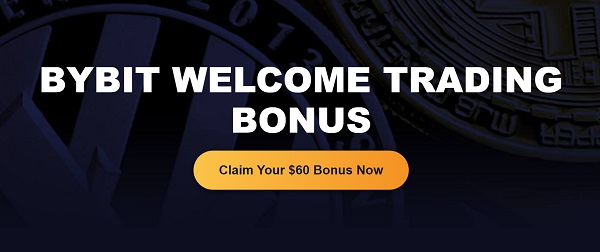


Be the first to comment